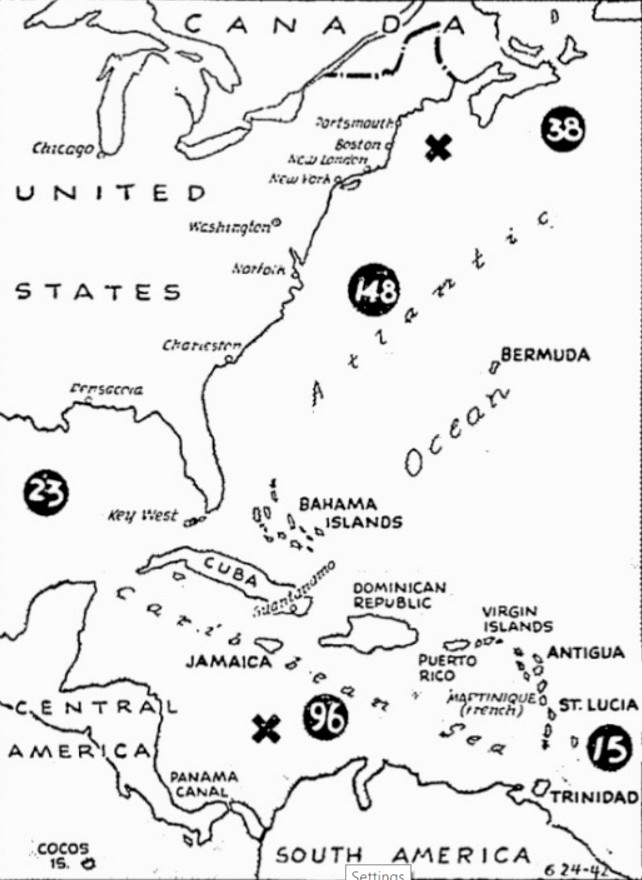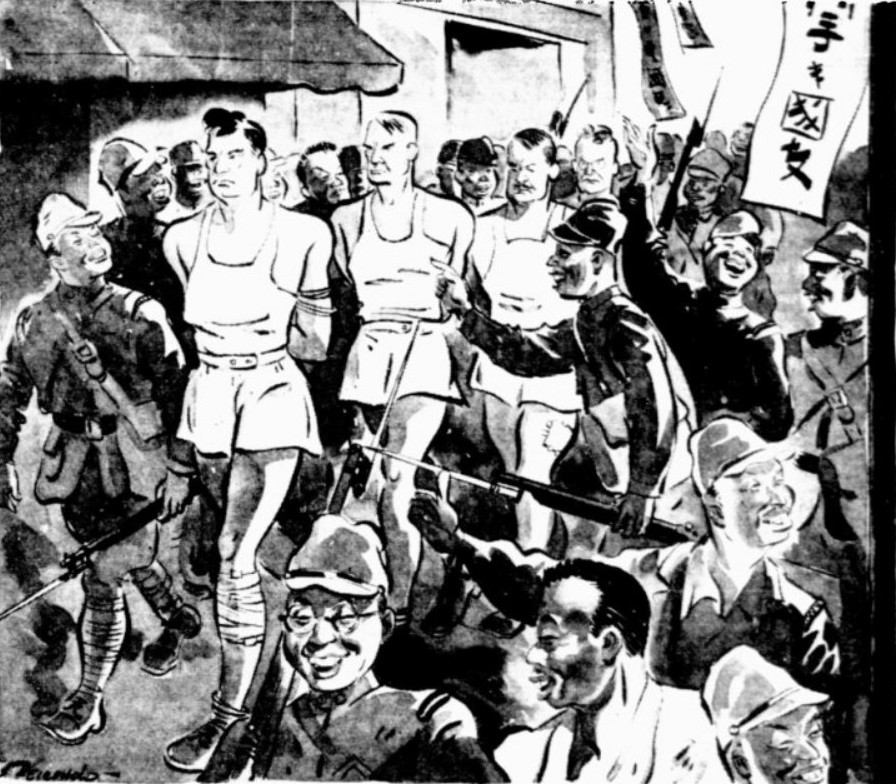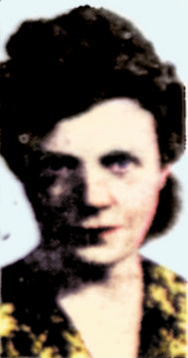NAZIS SUBS SINK 16 MORE SHIPS
320 vessels lost so far near America
635 saved from 13 ships in Caribbean; 88 dead in New England sinking
Allies shipping losses mount

Numbers in circles on the map indicate the total number of Allied ships sunk in that area since mid-January by Axis submarines and mines. The toll has reached 320. The X’s indicate where a U.S. vessel went down 75 miles off New England with a loss of 88 lives and where a British ship went down 175 miles from the Panama Canal.
A Caribbean port (UP) –
The sinking of 16 more United Nations ships – 13 in the Caribbean, two off the United States Atlantic Coast and one in the Gulf of Mexico – raised to at least 320 today the toll of vessels Axis submarines and submarine-laid mines have taken in Western Hemispherical waters since the middle of January.
The latest sinking was revealed today when the entire crew of a small Yugoslavian merchantman reached an East Coast port after their ship was sunk by a U-boat in the Gulf of Mexico June 19. The vessel was, the captain said:
…torn to pieces by a terrific explosion which followed a second torpedo.
Altogether, 354 United Nations vessels have been victims of torpedoes, shells and submarines in this area, but 34 reached port.
This compilation, believed conservative, shows 148 ships lost along the Atlantic Seaboard, 96 in the Caribbean, 23 in the Gulf of Mexico, 15 in the South Atlantic and 38 off the Canadian coast.
Rescue vessels sunk
The 13 vessels, the Navy disclosed yesterday had been sunk in the Caribbean, went down from June 3 to 14, inclusive. The Navy said that 770 persons, including 135 passengers, were aboard the ships and that 635 persons, including 126 passengers, had been rescued. They were brought to this port, or made their way to it.
In two instances, crews were on sinking vessels twice before they reached here. The ships that rescued them were torpedoed and sunk.
But one of the heaviest death tolls recorded since the Axis submarine campaign began was on a medium-sized U.S. cargo-passenger ship sunk off the U.S. Atlantic Coast about 75 miles from New England. Survivors revealed yesterday that 88 lives were lost when three submarines attacked their vessel. The second sinking off the East Coast revealed yesterday was that of a medium-sized British ship.
List Caribbean sinkings
The 13 Caribbean sinkings included:
June 3
A small Norwegian ship.
June 4
A U.S. cargo ship.
June 8
A British merchant ship, an American-owned, Honduran-registered cargo vessel.
June 10
Four British ships, a Dutch passenger vessel.
June 11
An American cargo ship.
June 12
An American passenger-freighter.
June 13
A small American merchantman.
June 14
A U.S. freighter.
Survivors described their experiences.
Mrs. Edna Theresa Johansson, 48, of New Orleans, stewardess on one of the American ships, and the only woman on it, said the ship was torpedoed a few hours after leaving port.
Meet sub near vessel
Hearing an explosion, she grabbed a bag she had packed for such emergency, and shouted:
We’ve been torpedoed.
She related:
Someone said, “Not yet.” And then another torpedo struck about 50 feet aft from where the first had exploded.
All aboard were able to get away in lifeboats, and about 350 feet from their sinking ship, they met the submarine. It flicked its searchlights on the lifeboats a few minutes, and then disappeared.
Additional explosions rent the ship, and it soon sank.
The ship’s third officer, James R. Glover, 25, of New York, said they were adrift four hours before they were rescued. He said the captain of the submarine, in riding boots, flared breeches and a leather jacket, emerged from the conning tower and tried to find out the ship’s destination. The survivors in Mr. Glover’s lifeboat gave him a false answer, and he asked whether they needed anything. Told that they could use cigarettes, he said the submarine could spare only 24.
The survivors told him:
We’ll see you in hell first.
…but as the submarine pulled away, the commander, nevertheless threw some cigarettes into the boat.
Capt. Robert N. Pierce of San Pedro, Cal., master of another American ship sunk June 11, said the first torpedo struck at 10:40 a.m., killing three members of the crew and injuring four. A second and a third torpedo exploded in a few seconds and the ship slid down.
Captain on two ships that sank
Capt. H. G. Beck, 38, of Houston, Tex., was master of a crew that was twice on a sinking ship. His ship “sank like lead” after it was torpedoed, trapping 12 of the crew below deck.
Seventeen survivors of the crew of 32 were able to get away. Next day, a British cargo vessel rescued them and on June 10, the British ship was torpedoed and sunk. Once more, Capt. Beck found himself adrift, and with only nine of the original 17 survivors of his ship.
The British ship was sunk 175 miles from the eastern entrance of the Panama Canal.
Shells American vessel
On June 10, a Dutch passenger ship, with a crew of 67 officers and men and 27 passengers was torpedoed and sunk. A U.S. freighter picked up the survivors the following morning, and three days later, a submarine torpedoed the American vessel and then shelled it.
The U.S. vessel, besides survivors of the Dutch ship, carried a crew of 40. Of the 94 persons aboard the Dutch ship, 49 were saved by the U.S. freighter – 31 seamen and 18 passengers.
Ensign Malcolm S. McLeod, 22, of Bellingham, Wash., commanded a Navy gun crew aboard a medium-sized U.S. freighter sunk June 13. His crew stuck by their gun until rising water and fumes seeping up from below forced them to abandon it. They didn’t get to shoot at the submarine because it stayed underwater until 12 minutes after the second of the two torpedoes it fired struck.
Praises ship’s engineer
All 56 men aboard got away, but Second Engineer Abe Ediger of Kansas City died in a fall aboard the ship that rescued them.
Ensign McLeod said Mr. Ediger took command of the engine room after the torpedoes exploded, ordered firemen and oilers to safety and put the engines full speed astern so lifeboats could be launched.
Ensign McLeod said:
None of us would be here today if it hadn’t been for Abe.
Survivors of the sinkings of two British vessels drifted only a few hours before they were rescued. The captain, second radio operator and third engineer of a small British freighter, torpedoed June 8, were killed by the explosion. The chief engineer died aboard the rescue vessel.


